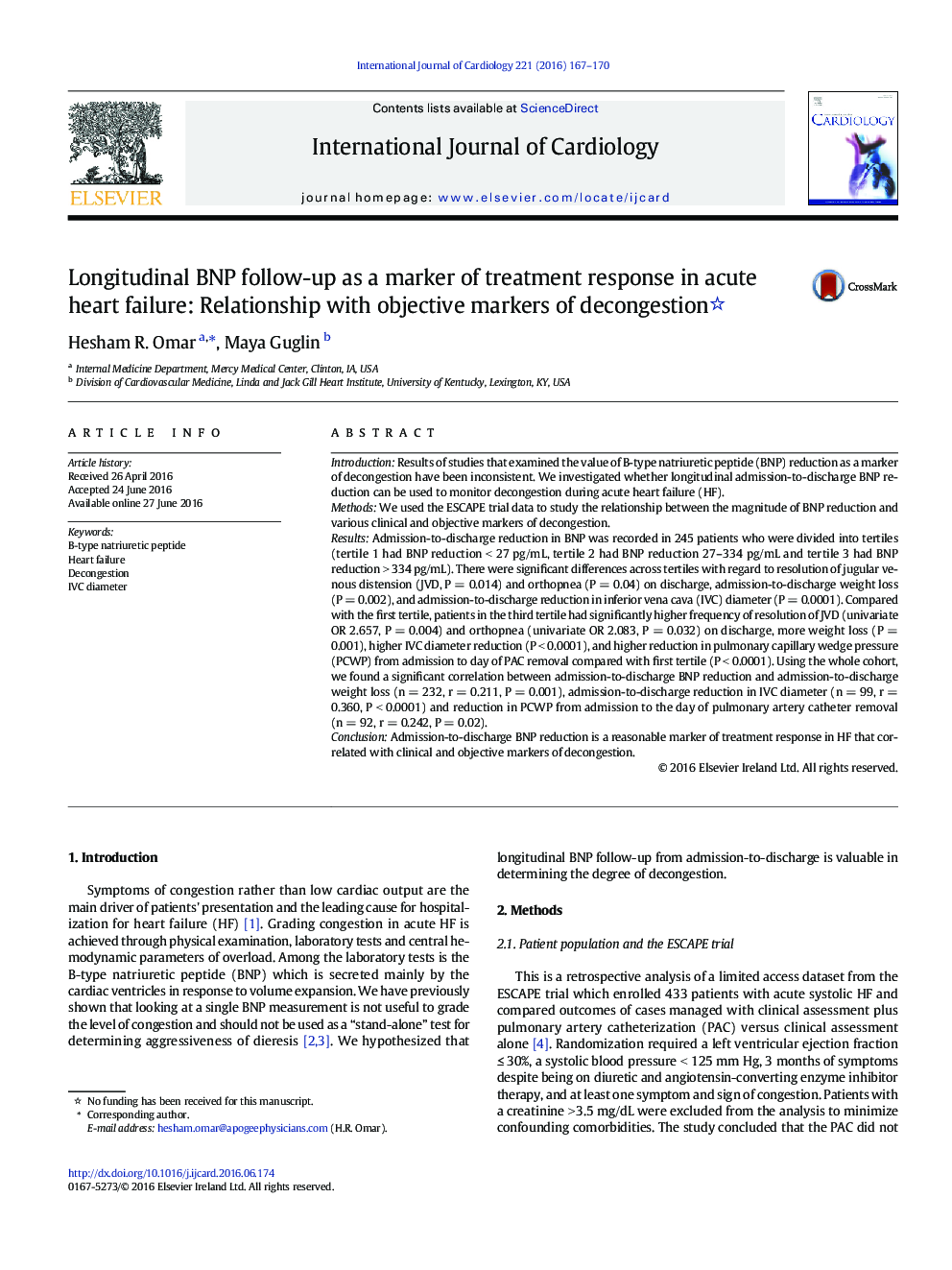| کد مقاله | کد نشریه | سال انتشار | مقاله انگلیسی | نسخه تمام متن |
|---|---|---|---|---|
| 5962898 | 1576127 | 2016 | 4 صفحه PDF | دانلود رایگان |

IntroductionResults of studies that examined the value of B-type natriuretic peptide (BNP) reduction as a marker of decongestion have been inconsistent. We investigated whether longitudinal admission-to-discharge BNP reduction can be used to monitor decongestion during acute heart failure (HF).MethodsWe used the ESCAPE trial data to study the relationship between the magnitude of BNP reduction and various clinical and objective markers of decongestion.ResultsAdmission-to-discharge reduction in BNP was recorded in 245 patients who were divided into tertiles (tertile 1 had BNP reduction < 27 pg/mL, tertile 2 had BNP reduction 27-334 pg/mL and tertile 3 had BNP reduction > 334 pg/mL). There were significant differences across tertiles with regard to resolution of jugular venous distension (JVD, P = 0.014) and orthopnea (P = 0.04) on discharge, admission-to-discharge weight loss (P = 0.002), and admission-to-discharge reduction in inferior vena cava (IVC) diameter (P = 0.0001). Compared with the first tertile, patients in the third tertile had significantly higher frequency of resolution of JVD (univariate OR 2.657, P = 0.004) and orthopnea (univariate OR 2.083, P = 0.032) on discharge, more weight loss (P = 0.001), higher IVC diameter reduction (P < 0.0001), and higher reduction in pulmonary capillary wedge pressure (PCWP) from admission to day of PAC removal compared with first tertile (P < 0.0001). Using the whole cohort, we found a significant correlation between admission-to-discharge BNP reduction and admission-to-discharge weight loss (n = 232, r = 0.211, P = 0.001), admission-to-discharge reduction in IVC diameter (n = 99, r = 0.360, P < 0.0001) and reduction in PCWP from admission to the day of pulmonary artery catheter removal (n = 92, r = 0.242, P = 0.02).ConclusionAdmission-to-discharge BNP reduction is a reasonable marker of treatment response in HF that correlated with clinical and objective markers of decongestion.
Journal: International Journal of Cardiology - Volume 221, 15 October 2016, Pages 167-170